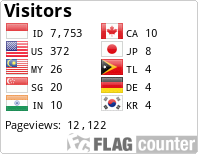UJI DAYA HAMBAT EKSTRAK DAUN KEDONDONG (Spondias dulcis L.) TERHADAP PERTUMBUHAN Escherichia coli ATCC 35218
DOI:
https://doi.org/10.46356/jakk.v4i1.174Keywords:
Zona Hambat, Daun Kedondong, Escherichia coliAbstract
ABSTRAK
Kedondong merupakan tumbuhan tropis yang merupakan famili dari Anacardiaceae. Tanaman Kedondong
digunakan sebagai obat tradisional untuk pengobatan diare, disentri, infeksi mulut, dan tenggorokan. Tanaman
kedondong mengandung senyawa flavonoid, saponin, dan tannin yang merupakan senyawa aktif yang bersifat
antibakteri. Tujuan penelitian untuk mengetahui daya hambat ekstrak daun kedondong (Spondias dulcis L.) terhadap
Escerichia coli. Jenis penelitian yang dilakukan adalah eksperimen dengan ekstrak daun kedondong diberi perlakuan
sebagai uji daya hambat terhadap pertumbuhan Escherichia coli. Ekstrak daun kedondong diperoleh dengan metode
maserasi selama 5 hari dengan pelarut etanol. Pada penelitian ini menggunakan metode Kirby bauer disk diffusion
(paper disk). Hasil penelitian menunjukkan bahwa terdapat zona bening disekitar paper disk yang menandakan
ekstrak daun kedondong dapat menghambat pertumbuhan Escherichia coli. Ekstrak daun kedondong konsentrasi 5%
memiliki zona hambat rata-rata 9,45 mm, konsentrasi 10% memiliki zona hambat rata-rata 11,65 mm, konsentrasi
15% memiliki zona hambat rata-rata 15,36 mm.
Kata kunci: Zona Hambat, Daun Kedondong, Escherichia coli
ABSTRACT
Kedondong is a tropical plant which is a family of Anacardiaceae. Kedondong plants are used as traditional
medicine for the treatment of diarrhea, dysentery, mouth and throat infections. Kedondong plants contain flavonoid,
saponin, and tannin compounds which are active antibacterial compounds. The aim of the study was to determine
the inhibitory power of kedondong (Spondias dulcis L.) leaf extract against Escherichia coli. The type of research
carried out was an experiment with kedondong leaf extract treated as an inhibitory test for the growth of Escherichia
coli. Kedondong leaf extract was obtained by maceration method for 5 days with ethanol solvent. In this study using
the Kirby bauer disk diffusion (paper disk) method. The results showed that there was a clear zone around the paper
disk indicating that the extract of kedondong leaves could inhibit the growth of Escherichia coli. Kedondong leaf
extract concentration of 5% has an average inhibition zone of 9.45 mm, a concentration of 10% has an average
inhibition zone of 11.65 mm, a concentration of 15% has an average inhibition zone of 15.36 mm.
Keywords: Inhibitory Zone, Kedondong Leaves, Escherichia coli.
Downloads
Published
Issue
Section
License
Authors who publish on JAKK can share their research in a number of ways. JAKK does not impose an embargo on published journals, meaning that researchers can access it openly after the article is published. Researchers who have subscribed to access to articles can also share.
JAKK already uses the Open Journal System (OJS) thereby enabling the final version of all published research articles to be placed in any digital archive immediately after publication. JAKK can automatically make feeds of open access articles available to any repository that wishes to receive them.
Authors who publish with this journal agree to the following terms:
* Authors retain copyright and grant the journal right of first publication, with licensed under a Creative Commons Attribution ShareAlike 4.0 International License (CC BY-SA 4.0) that allows others to share the work with an acknowledgement of the work's authorship and initial publication in this journal.
* Authors are able to enter into separate, additional contractual arrangements for the non-exclusive distribution of the journal's published version of the work (e.g., post it to an institutional repository or publish it in a book), with an acknowledgement of its initial publication in this journal.
* Authors are permitted and encouraged to post their work online (e.g., in institutional repositories or on their website) prior to and during the submission process, as it can lead to productive exchanges, as well as earlier and greater citation of published work.







2.jpg)

